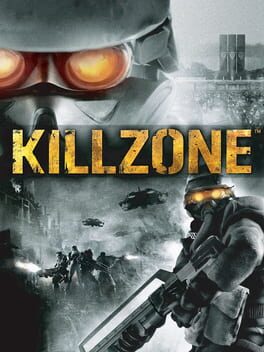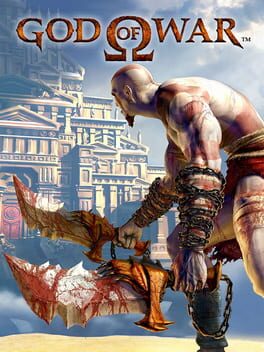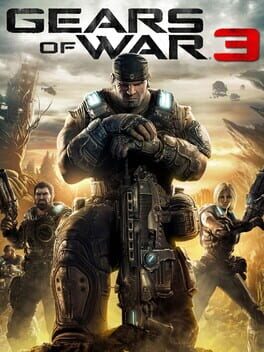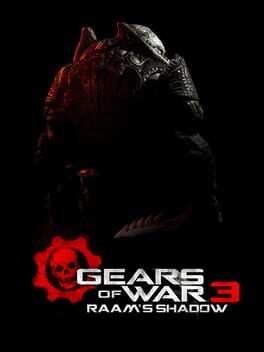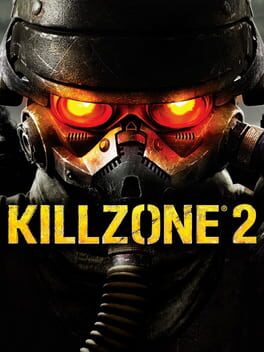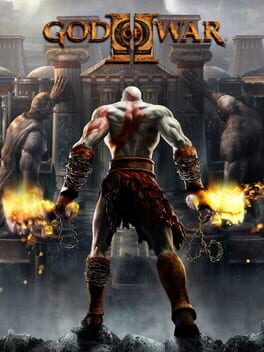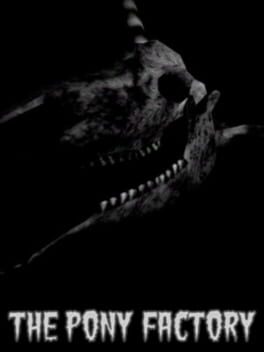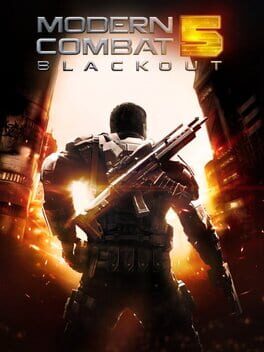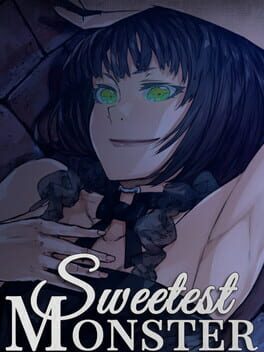Sar4h
2015
2012
Pretty bad remaster that does little to fix the flaws of the PS2 original. There's an increase in resolution but the game still runs at 30 fps with textures that are embarrassing for a 2012 release.
The game also has some pretty clunky and unresponsive controls which, combined with the often subpar level design, can make it a chore to play through. However, the story and world building are fairly interesting, making the cutscenes enjoyable to watch. The game's score is also great but doesn't play during regular gameplay for some reason.
Ultimately a flawed release but worth it for those who want to see where the series came from.
The game also has some pretty clunky and unresponsive controls which, combined with the often subpar level design, can make it a chore to play through. However, the story and world building are fairly interesting, making the cutscenes enjoyable to watch. The game's score is also great but doesn't play during regular gameplay for some reason.
Ultimately a flawed release but worth it for those who want to see where the series came from.
2009
Everyone always complains about Kratos being this super angry dude, but after suffering through hours of finger destroying QTEs, annoying platforming sections, and enraging puzzles featuring way too many movable boxes, I kinda understand where he's coming from.
The game is also a pretty poor ps3 release, with fps drops and a zoomed in aspect ratio that cuts off the top and bottom of the original 4:3 presentation.
The game is also a pretty poor ps3 release, with fps drops and a zoomed in aspect ratio that cuts off the top and bottom of the original 4:3 presentation.
2008
An impressive showpiece of what the
360 hardware was capable of that
surpasses it's predecessor in every aspect: bigger setpieces, more engaging story, more gameplay variation - the list goes on. Unfortunately, the "tough military men" angle typical for this period of gaming prevents the story from reaching its full thematic potential.
360 hardware was capable of that
surpasses it's predecessor in every aspect: bigger setpieces, more engaging story, more gameplay variation - the list goes on. Unfortunately, the "tough military men" angle typical for this period of gaming prevents the story from reaching its full thematic potential.
2011
Gears of War 3 fails to surpass Gears 2 in terms of scale and sheer epicness. While the ending is satisfying, the game slightly drags in the middle, and the Lambent are less fun to fight then the classic Locust. Graphically, the game somehow manages to improve on the already excellent second game - played on a Series X with fps boost, it could easily be mistaken for a Xbox one game.
While the dlc provides some additional context to the events and characters of the first Gears of War, it also feels inconsequential, especially when played after finishing the original Gears trilogy. There's some fun to be had here for sure, but the Raam gameplay is lacking depth and I encountered several bugs during my playthrough, including one that could only be fixed by restarting an earlier checkpoint.
2009
Some late 2000s shooter tropes aside, Killzone 2 is still an incredibly impressive game, especially considering it released on the ps3. Enemies aggressively advance, cover shatters under fire, enemies physically interact with the environment when shot, all while lightning and weapon fire light up the scene and futuristic vehicles move around the battlefield. However, those impressive visual qualities come at a cost: the framerate frequently dips into the low to mid 20s and the input lag is fairly noticeable. Beautiful graphics aside, the gameplay is never as fun as it could be due to this sluggish overall feel.
2009
God of War 2 improves upon its predecessor in nearly every department: cinematics are more detailed, setpieces are bigger, and combat and general controls were improved as well. Thankfully, there are way less platforming sections and box shoving puzzles this time around, and the QTEs no longer feel like they were designed to make you destroy your controller's circle button.
Unfortunately, the game suffers heavily from being the second installment in a trilogy. Concluding the story on the more powerful ps3 was the right call to make, but it also left God of War 2 with very little plot development to work with. Most of Kratos' backstory was already explored in the first game, so his character doesn't develop and he starts to feel like a one dimensional revenge machine. There's also a solid two hours in the middle of the game that feel like inconsequential filler and while the level design is never truly bad, it's also not engaging enough to keep players from getting bored.
Luckily, the game ends on a high note, with several impressive boss fights and an excellent setup for the third game. I just really wish it was shorter, as I don't see myself slogging through that middle part again anytime soon.
Lastly, a note on the ps3 port: as with the first game, the GoW collection presents the game in 16:9 widescreen, cutting off the top and bottom of the original 4:3 image in the process. I've encountered some minor glitches and a lot of performance issues (mostly due to fire and particle effects) during my time with the game. None of that is really game breaking, as the game is mostly running at 60 fps, but there are certainly better remasters out there.
Unfortunately, the game suffers heavily from being the second installment in a trilogy. Concluding the story on the more powerful ps3 was the right call to make, but it also left God of War 2 with very little plot development to work with. Most of Kratos' backstory was already explored in the first game, so his character doesn't develop and he starts to feel like a one dimensional revenge machine. There's also a solid two hours in the middle of the game that feel like inconsequential filler and while the level design is never truly bad, it's also not engaging enough to keep players from getting bored.
Luckily, the game ends on a high note, with several impressive boss fights and an excellent setup for the third game. I just really wish it was shorter, as I don't see myself slogging through that middle part again anytime soon.
Lastly, a note on the ps3 port: as with the first game, the GoW collection presents the game in 16:9 widescreen, cutting off the top and bottom of the original 4:3 image in the process. I've encountered some minor glitches and a lot of performance issues (mostly due to fire and particle effects) during my time with the game. None of that is really game breaking, as the game is mostly running at 60 fps, but there are certainly better remasters out there.
1985
Firing up Super Mario Bros. for the first time in 2024 feels less like playing a game and more like looking at a museum exhibit. Every few minutes, another now iconic piece of music, scenery, or enemy will pop up to remind you of the cultural impact this game had.
Unfortunately, the gameplay didn't really grab me. Mario's moveset feels fairly restrictive compared to modern titles, and the game seemingly tries to make up for that with its extreme difficulty. Perhaps it works better on an NES controller, but playing it with joycons on a Switch made me rely on the rewind feature to make it through a lot of the stages. While games like Celeste have the decency to respawn players at the beginning of a screen, Super Mario Bros. will completely reset the player's progress after a few deaths.
All in all, I recommend at least trying the game to see why it has its place in gaming history, but I suspect only hardcore gamers will make it through it without relying on save states or cheats.
Unfortunately, the gameplay didn't really grab me. Mario's moveset feels fairly restrictive compared to modern titles, and the game seemingly tries to make up for that with its extreme difficulty. Perhaps it works better on an NES controller, but playing it with joycons on a Switch made me rely on the rewind feature to make it through a lot of the stages. While games like Celeste have the decency to respawn players at the beginning of a screen, Super Mario Bros. will completely reset the player's progress after a few deaths.
All in all, I recommend at least trying the game to see why it has its place in gaming history, but I suspect only hardcore gamers will make it through it without relying on save states or cheats.
2011
Killzone 2's graphics had already pushed the PS3 to its limit, and while the result was impressive, the game had horrible input lag and a framerate that often dropped into the low 20s. When it came to developing Killzone 3, it seems like Guerilla Games prioritized performance and latency; if you know where to look, you'll quickly notice that some effects were visibly reduced. Concrete no longer dynamically crumbles under fire, and muzzle flash shadows are similarly pared back, to name two examples.
That's not to say that Killzone 3 looks bad, the opposite is the case. In some areas, like the sheer amount of environmental destruction, Killzone 3 might even be superior to some modern shooters. Most players won't even notice the reduced effects in the heat of battle, and the shift in technical resources lead to a significantly improved shooting experience. Thanks to the reworked controls, new aim assist, and absence of input lag, the combat feels better than ever. It might not be the Halo killer that Sony had hoped for, but it's still an excellent combat loop.
Killzone 3's campaign is fairly short, but makes up for it with the sheer number of unique setpieces and levels. Missions see players sneak through a jungle filled with strange alien plants, drive several vehicles, and even use a jetpack to fight in the air above arctic offshore rigs - and that's just part of what happens in the game's first half. The campaign feels like a playable sci-fi action movie, and I mean that in the best way possible.
While the gameplay is fun and diverse, Killzone 3 unfortunately falls short as the conclusion to the Killzone trilogy. All the Killzone games are fairly different in terms of writing, style, and overall themes. Killzone 3 doesn't feel like a natural follow-up to the second game, especially considering how the game immediately introduces two very important Helghast commanders that were never mentioned before, even though one of them is apparently responsible for basically every advanced piece of weaponry the Helghast use. The game ends with another cliffhanger, similarly to Killzone 2. The difference is that while the ending of Killzone 2 was built up throughout the game and felt like a subversion of shooter tropes, the cliffhanger in 3 felt like the second half of the ending cutscene was just missing. I guess what I'm trying to say is, don't play this one for the story.
That's not to say that Killzone 3 looks bad, the opposite is the case. In some areas, like the sheer amount of environmental destruction, Killzone 3 might even be superior to some modern shooters. Most players won't even notice the reduced effects in the heat of battle, and the shift in technical resources lead to a significantly improved shooting experience. Thanks to the reworked controls, new aim assist, and absence of input lag, the combat feels better than ever. It might not be the Halo killer that Sony had hoped for, but it's still an excellent combat loop.
Killzone 3's campaign is fairly short, but makes up for it with the sheer number of unique setpieces and levels. Missions see players sneak through a jungle filled with strange alien plants, drive several vehicles, and even use a jetpack to fight in the air above arctic offshore rigs - and that's just part of what happens in the game's first half. The campaign feels like a playable sci-fi action movie, and I mean that in the best way possible.
While the gameplay is fun and diverse, Killzone 3 unfortunately falls short as the conclusion to the Killzone trilogy. All the Killzone games are fairly different in terms of writing, style, and overall themes. Killzone 3 doesn't feel like a natural follow-up to the second game, especially considering how the game immediately introduces two very important Helghast commanders that were never mentioned before, even though one of them is apparently responsible for basically every advanced piece of weaponry the Helghast use. The game ends with another cliffhanger, similarly to Killzone 2. The difference is that while the ending of Killzone 2 was built up throughout the game and felt like a subversion of shooter tropes, the cliffhanger in 3 felt like the second half of the ending cutscene was just missing. I guess what I'm trying to say is, don't play this one for the story.
1988
The first actual sequel to Super Mario Bros. is a bigger and more creative game. Every new world brings new gameplay mechanics with it and while boss fights are still repeated quite often, at least there's more than one now.
However, I'm not a big fan of the game's difficulty. How hard a game is is of course subjective and some players might enjoy the challenge, but some levels almost require memorization. The issue is that with the side scrolling perspective, enemies and traps often pop up too late to realistically react to, making some deaths feel very cheap. This can be somewhat mitigated on modern emulators with save states or rewinds.
I also have some complaints about the NES emulator included with the Nintendo Online subscription. I know that the quality of an emulator isn't the games fault, but as this is a paid service offered by the same company that published the game in the first place, I'm making an exception. The NES emulator heavily distorts the right border of the image, showing blocks that just enter the screen in the wrong color. This can affect gameplay as it makes reacting to dangers harder, and it's also just kind of embarrassing - the game deserves better.
If you have the chance to play this game on original hardware or on another emulator, you can easily add an additional star to my rating. Overall, it's an enjoyable game, but only for those willing to deal with it's brutal difficulty.
However, I'm not a big fan of the game's difficulty. How hard a game is is of course subjective and some players might enjoy the challenge, but some levels almost require memorization. The issue is that with the side scrolling perspective, enemies and traps often pop up too late to realistically react to, making some deaths feel very cheap. This can be somewhat mitigated on modern emulators with save states or rewinds.
I also have some complaints about the NES emulator included with the Nintendo Online subscription. I know that the quality of an emulator isn't the games fault, but as this is a paid service offered by the same company that published the game in the first place, I'm making an exception. The NES emulator heavily distorts the right border of the image, showing blocks that just enter the screen in the wrong color. This can affect gameplay as it makes reacting to dangers harder, and it's also just kind of embarrassing - the game deserves better.
If you have the chance to play this game on original hardware or on another emulator, you can easily add an additional star to my rating. Overall, it's an enjoyable game, but only for those willing to deal with it's brutal difficulty.
Considering all the games in the New Super Mario Bros. series we have today, Nintendo going 14 years without releasing a traditional 2D Mario game seems almost hard to believe. New Super Mario Bros. successfully introduces a 2.5D look to the series and despite the DS's relatively weak hardware, this style works surprisingly well. The game makes excellent use of color, leading to an easily readable game, even at the low resolution it shipped with.
NSMB manages to introduce new gameplay elements throughout the entire game, up to and including the final world. A lot of those are reused from earlier Mario titles, but that doesn't make them any less fun. Even 18 years after its release, the platforming holds up surprisingly well.
While I can only praise the core gameplay loop, I do have some minor points of criticism: Firstly, the game's difficulty is all over the place - during some worlds I was showered with extra lives, only to lose them all in the final world. In fact, it got so bad I even had to go back to earlier worlds to grind additional lives. The tiny controls of the DS line of hardware certainly don't help with the precise platforming the game often requires, making me wish for a re-release on modern platforms.
All of my criticisms might sound like nitpicking, but that only speaks for the overall quality of NSMB. Even though I struggled with the final levels, I got so captivated that I stayed awake until 4 am so I could finally finish the game. All things considered, I wouldn't call the first NSMB a must play, mainly because of its sequels existing on newer consoles. That doesn't change the fact that NSMB is one of, if not the best platformer on the original DS.
NSMB manages to introduce new gameplay elements throughout the entire game, up to and including the final world. A lot of those are reused from earlier Mario titles, but that doesn't make them any less fun. Even 18 years after its release, the platforming holds up surprisingly well.
While I can only praise the core gameplay loop, I do have some minor points of criticism: Firstly, the game's difficulty is all over the place - during some worlds I was showered with extra lives, only to lose them all in the final world. In fact, it got so bad I even had to go back to earlier worlds to grind additional lives. The tiny controls of the DS line of hardware certainly don't help with the precise platforming the game often requires, making me wish for a re-release on modern platforms.
All of my criticisms might sound like nitpicking, but that only speaks for the overall quality of NSMB. Even though I struggled with the final levels, I got so captivated that I stayed awake until 4 am so I could finally finish the game. All things considered, I wouldn't call the first NSMB a must play, mainly because of its sequels existing on newer consoles. That doesn't change the fact that NSMB is one of, if not the best platformer on the original DS.
2024
I've been following David Szymanski's work since Dusk, and have since bought pretty much all of his games on or around release day. Looking at his work, it quickly becomes apparent that he has a knack for both horror and shooter design. The Pony Factory leans more into the horror side, although it still includes fps elements.
Pony Factory feels like a love letter to Doom 3. Back when Doom 3 first released, players could not equip a weapon and a flashlight at the same time, meaning they had to choose between being able to see or being able to shoot. The BFG re-release would eventually change that, but Szymanski seemingly enjoyed this dynamic so much that he made it the core mechanic of Pony Factory. The game's sharp shadows and heavily stylized lighting lend themselves well to this sort of gameplay, and some of the scares definitely caught me off guard.
However, it's important to remember that Pony Factory is not a big release. This is a 4€ game that regularly goes on sale and can be completed in less than an hour. There are some alternative gameplay modes, but nothing to keep players hooked for hours on end. The game reusing some of its levels has been criticized but I personally didn't mind it, especially since making a level that works well no matter from what direction you approach it is incredibly impressive. Ultimately, Pony Factory is a very good bite sized horror fps, and a must play for every fan of Doom 3.
Pony Factory feels like a love letter to Doom 3. Back when Doom 3 first released, players could not equip a weapon and a flashlight at the same time, meaning they had to choose between being able to see or being able to shoot. The BFG re-release would eventually change that, but Szymanski seemingly enjoyed this dynamic so much that he made it the core mechanic of Pony Factory. The game's sharp shadows and heavily stylized lighting lend themselves well to this sort of gameplay, and some of the scares definitely caught me off guard.
However, it's important to remember that Pony Factory is not a big release. This is a 4€ game that regularly goes on sale and can be completed in less than an hour. There are some alternative gameplay modes, but nothing to keep players hooked for hours on end. The game reusing some of its levels has been criticized but I personally didn't mind it, especially since making a level that works well no matter from what direction you approach it is incredibly impressive. Ultimately, Pony Factory is a very good bite sized horror fps, and a must play for every fan of Doom 3.
Look, I know what you're about to say: "Sarah, why would you play the switch port of a mediocre 10 year old mobile fps?" To be perfectly honest, I have a weak spot for bad fps campaigns; the kind of singleplayer that tries to copy Call of Duty and horrendously fails at it, creating a product so bad it starts to become entertaining again.
Modern Combat 5 is one of those games. It's sort of like a SpaceX rocket: you hope for the best, but you also know it's going to crash and burn. Modern Combat 5 includes every single fps cliché that the ps360 generation has produced: stupid AI, a nonsensical plot about stopping terrorists (that heavily borrows from Modern Warfare 2), and of course slow motion door breaches. All of this is accompanied by generic side characters and even more generic guns. There's also a multiplayer mode that resembles a more janky version of Modern Warfare's multiplayer, although I'm fairly certain that even in 2007 Call of Duty had more than two modes.
While I was generally entertained by the utter stupidity of the game's mission design and story, the technically aspects made finishing the game a chore. The Switch port has removed the pay2win mechanics, which doesn't make the game better, it just makes it less predatory. The frame rate is simply unacceptable for a console that can run the modern Doom games, and the game is filled with bugs. Even worse, the games difficulty curve looks less like a curve, and more like what a seismograph would produce during an earthquake.
I bought this game for 2€, hoping for a bad but entertaining game. While I did have some fun, due to the games technical issues, I unfortunately can't recommend this one to even the most hardcore fans of bad games.
Modern Combat 5 is one of those games. It's sort of like a SpaceX rocket: you hope for the best, but you also know it's going to crash and burn. Modern Combat 5 includes every single fps cliché that the ps360 generation has produced: stupid AI, a nonsensical plot about stopping terrorists (that heavily borrows from Modern Warfare 2), and of course slow motion door breaches. All of this is accompanied by generic side characters and even more generic guns. There's also a multiplayer mode that resembles a more janky version of Modern Warfare's multiplayer, although I'm fairly certain that even in 2007 Call of Duty had more than two modes.
While I was generally entertained by the utter stupidity of the game's mission design and story, the technically aspects made finishing the game a chore. The Switch port has removed the pay2win mechanics, which doesn't make the game better, it just makes it less predatory. The frame rate is simply unacceptable for a console that can run the modern Doom games, and the game is filled with bugs. Even worse, the games difficulty curve looks less like a curve, and more like what a seismograph would produce during an earthquake.
I bought this game for 2€, hoping for a bad but entertaining game. While I did have some fun, due to the games technical issues, I unfortunately can't recommend this one to even the most hardcore fans of bad games.
2017
Sweetest Monster is probably the most disturbing game I've ever played. It's fairly light on nudity and despite what its Steam store page says, there's also not a lot of actual "fan service" here. It's more of a deconstruction of Visual Novel tropes, but it's also very much concerned with the way men often view women. Because of that, what might be considered fan service in other VNs just made me really uncomfortable here, and I'm fairly certain that's precisely what the author intended.
It's a fairly short game (2-3 hours depending on how fast you read) and I believe that discussions of the plot would only stray into spoiler territory, something a lot of other reviews here and on Steam seem to do. It's a compelling story that quickly pulled me in and it's best experienced blind, although I recommend to perhaps check trigger warnings since this game certainly requires a lot of them. There are no decisions to make in this one, but I didn't miss them at all and think the game is better off without them.
If I had to criticize anything, it'd be that some of the characters sound a bit unnatural when talking. I especially noticed this with the protagonist's wife, whose dialogue is just to sophisticated to pass as everyday speech. This gets noticeably better after the first 10-15 minutes, so I'm not deducting to much from the score. Overall, I'd definitely recommend this for fans of darker and more mature Visual Novels.
Edit: In the days following this review I have also completed the game's sequel, Sweetest Monster Refrain. Refrain is probably the most niche game I've ever played, with not a single walkthrough on YouTube, no discussions on it anywhere, and not even a page on backloggd (which is why I'm writing about it here).
Refrain starts out almost painfully slow, but picks up after the first third. From there on the game gets better and better, building up to a single brutal decision. Due to the initial slow pacing I'd rate it around 4 stars, so slightly lower than the first one. Nevertheless, everyone who liked Sweetest Monster (and can stomach more of the game's heavy subjects) should check out Refrain.
It's a fairly short game (2-3 hours depending on how fast you read) and I believe that discussions of the plot would only stray into spoiler territory, something a lot of other reviews here and on Steam seem to do. It's a compelling story that quickly pulled me in and it's best experienced blind, although I recommend to perhaps check trigger warnings since this game certainly requires a lot of them. There are no decisions to make in this one, but I didn't miss them at all and think the game is better off without them.
If I had to criticize anything, it'd be that some of the characters sound a bit unnatural when talking. I especially noticed this with the protagonist's wife, whose dialogue is just to sophisticated to pass as everyday speech. This gets noticeably better after the first 10-15 minutes, so I'm not deducting to much from the score. Overall, I'd definitely recommend this for fans of darker and more mature Visual Novels.
Edit: In the days following this review I have also completed the game's sequel, Sweetest Monster Refrain. Refrain is probably the most niche game I've ever played, with not a single walkthrough on YouTube, no discussions on it anywhere, and not even a page on backloggd (which is why I'm writing about it here).
Refrain starts out almost painfully slow, but picks up after the first third. From there on the game gets better and better, building up to a single brutal decision. Due to the initial slow pacing I'd rate it around 4 stars, so slightly lower than the first one. Nevertheless, everyone who liked Sweetest Monster (and can stomach more of the game's heavy subjects) should check out Refrain.

